Search Results for Tag: UN
Can we halt Arctic melt? Hard question for UN advisor
I had a very interesting high-profile visitor here at Deutsche Welle this week. Bonn, John Le Carré’s “Small Town in Germany” is this country’s UN city nowadays, home to organizations like the climate secretariat UNFCCC and the Convention on Migratory Species, CMS. This year marks 20 years of the former German capital in that new UN role. Fortunately for me and my colleagues, it brings a lot of interesting people to the city.
The University and the City of Bonn have been running a series of lectures by members of the Scientific Advisory Board of the United Nations Secretary-General Ban Ki-Moon this year, under the heading “Global Solutions for Sustainable Development”. This week, it was the turn of Susan Avery, who was President and Director of the Woodshole Oceanographic Institution in the USA until last year. She has been on the advisory board to Ban Ki-Moon for the last three years and she and the other advisors are just finishing their report, so it was great to have the opportunity to talk in length.
Sea and sky as dancing partners
Her lecture was about the importance of the ocean with regard to climate, but she also talked to me about a whole range of ocean-related issues in an interview to be broadcast on our Living Planet programme, starting next week.
Susan Avery is an atmospheric scientist, (the first to head a major oceanographic institution, she told me). She has a very attractive image to describe how the atmosphere and the ocean relate to each other:
“In our planetary system we have two major fluids, the ocean and the atmosphere, and think of them as two dance partners… moving along, but in order to get a choreographic dance, they have to talk to each other. They do that through the ocean-atmosphere interface, which is wave motion, spray, all the things that help them communicate. These two create different dances… an El Nino dance, or a hurricane dance, for example. In reality what they do together is transport heat, carbon and water, which are the major global cycles in our planetary system.”
Since the onset of industrialization, we humans have been introducing some different steps to the dance, it seems:
“When you take it to the climate scale, we talk a lot about the temperature of the atmosphere, increases associated with the infusion of carbon, that is human produced. The thing is that the extra carbon dioxide that gets released into the atmosphere through our fossil fuels and deforestation is associated with extra heat. Of the carbon dioxide we release into the atmosphere, half will stay in the atmosphere, 25% will go into the ocean, 25% will be taken up by the land. But if you look at the heating or warming, 93% of the extra warming is actually in the ocean. There are only very small amounts in the atmosphere.”
Centuries of warming pre-programmed
That means a huge amount of heat is actually being stored in our seas:
“And you can understand why, because the atmosphere is a gas, the ocean is a mass of liquid, which covers two thirds of our planet, and it has a huge heat capacity to store that, but that heat doesn’t just stay at the surface. So (..) when you only talk about heat and temperatures at the surface, you’re ignoring what’s happening below the surface in the ocean, and once the ocean gets heated it’s not going to stay there, because there is this fluid motion. So we’re getting to see greater and greater temperature increases at greater and greater depths. And once that heat gets into the ocean, it can stay there for centuries. Whereas in the upper ocean, it might stay 40 or 50 years, when you get into the deeper parts, because of the density and capacity, it stays there for a long time.”
So, she explained, the carbon dioxide we’ve put into the atmosphere already – and the heating associated with that – means that “we’re already pre-destined for a certain amount of global temperature increase. Many people say we have already pre-destined at least one and a half degree, some will say almost two degrees.”
Now if that is not a sobering thought.
And on top of that comes the acidification of the oceans caused by the extra carbon dioxide, which is playing havoc with coral reef systems and shell-based ocean life forms.
“This is really critical, because it attacks a lot of the base of the food chain for a lot of these eco-systems”.
“What’s in the Arctic is not staying in the Arctic”
Susan Avery’s work has included research on the Arctic and Antarctic, so of course I took the opportunity to ask how she sees all this affecting the polar regions.
She explained how the rapid increase in ice melt in the Arctic – both sea-ice and land ice – caused by atmospheric warming above and warmer ocean waters below, is of great concern for two reasons. The more obvious one is the contribution of land ice melt to sea-level-rise. The other, she explained, is that the melting of the land-based ice results in “a freshening of certain parts of the ocean, so particularly the sub-polar north Atlantic, so you have a potential for interfacing with our normal thermohaline circulation systems which could dramatically change that.” The changes in salinity currently being observed, are a “signal that the water cycle is becoming more vigorous”. This, of course, has major implications for ocean circulation and, in turn, the climate, not just in the region where the ice has been melting:
“What’s in the Arctic is not staying in the Arctic. What’s in the Antarctic is not staying in the Antarctic. I would say the polar regions are regions where we don’t have a lot of time before we see major, massive changes”.
What I find particularly worrying is that Susan Avery confirmed there is still so much we do not know about what is happening in the polar regions and in the ocean in general.
“We really need to get our observations and science and models working together”, she told me. “The new knowledge we have created on processes in the Arctic has to be incorporated into climate system models”.

Satellite data ( KSAT site in in Tromso) helps, but cannot penetrate deep ocean, Avery says. (Pic. I Quaile)
Paris and the poles
So, given that temperature rise of 1,5 to two degrees Celsius could already be a “given”, and the Arctic is being affected much faster and more strongly than the planet on average, is there any real hope that we can hold up these developments and halt the melting of ice in the Arctic? This was clearly a very difficult question for my guest. She told me she had been very relieved that the Paris Climate Agreement was signed and was sure humankind could still “make things better”. But when I asked whether we will really be able to reverse what is happening in the Arctic or halt climate change in the Antarctic, this was what she replied:
“I don’t have an answer, to be honest. I think we’re still learning a lot about the Arctic and its interface with lower latitudes, how that water basically changes circulation systems, and on what scale. But I think what’s really critically needed right now to get a better sense of the evolution of the Arctic, and of sea level rise, is a real concerted observing network. We know so little, about the Arctic, the life forms underneath the ice. We have the technology. What I really see now is a confluence of new technologies, new analytical approaches, new ways to do ocean science, and all it takes is money to really get those robots there, get the genomic studies that you need, the analysis. We are at the stage where we can do so much, to further our understanding, and I would really put a lot into the Arctic right now, if I had the money to do so.”
Me too, Susan.
Ice: the final frontier?

Investigating the undersea secrets of the Arctic night from the research vessel Helmer Hanssen (Pic: I.Quaile)
This brings us back to a key problem I have worried about ever since I started to work on how climate change is affecting the Arctic. That change is speeding up so fast, it is virtually impossible for our research to keep pace. As Susan Avery put it:
“The Arctic will be a major economic zone, we’ve already seen the North-West Passage through the Arctic waters, we’re going to see migration of certain fisheries around the world – and we don’t even know completely what kind of biological life we have below that ice. We have the ability to get underneath the ice now. I call these the frontiers, of the ocean, and that includes looking under ice.”
I am reminded of my trip on board the Helmer Hanssen last year, accompanying a research mission to find out what happens under that ice and down in the deep ocean during the cold, dark season.
(Listen to the audio feature here). There is still so much we do not know about life in the ocean – and it might disappear before we even knew it was there.
Hot, hot, hotter.. can UN talks in Bonn make a difference?
After all the hype surrounding the Paris Climate Agreement in December, there is a real danger of anti-climax, of feeling self-satisfied, of sitting back saying, “Yes, we did”, while the planet continues to break all temperature records and fossil fuel emissions continue to rise.
The first four months of this year were the hottest ever recorded. Even the “ice island” of Greenland has seen temperatures spiking in April, typically a cold month. NOAA says 2016 could be off to a similar start to 2012, when the surface of the ice sheet started melting early and then experienced the most extensive melting since the start of the satellite record in 1978. We have had several reports of islands being submerged by rising seas and devastating forest fires in Canada and now Russia, which experts say will be more common as the planet warms.
Close to my office here in Bonn, Germany’s UN city, the first official working meeting of all the parties to the Paris Agreement started on Monday, going on until next Friday. I have been there, on and off, talking to people, listening in, trying to get a sense of what is happening – or not, as the case may be.
But the atmosphere in Bonn’s new World Conference Centre is definitely low-key compared with the hype surrounding the Paris Climate Conference. Yet the world climate agreement will be worthless if the countries of the world do not succeed in transmitting it into actions in the very near future.
Time to deliver
The President of the Paris COP21, French Environmenent Minister Segolene Royal, and the incoming President of COP22, which will be held in Marrakech, Morocco’s Foreign Minister Salaheddine Mezouar, have made it clear that it is time to shift the focus from negotiation to implementation and rapid action.
The challenge ahead, they say, is to “operationalize the Paris Agreement: to turn intended nationally determined contributions into public policies and investment plans for mitigation and adaptation and to deliver on our promises.”
Indeed. There is no lack of evidence to support the urgent need for faster action on climate change. An increasing number of extreme weather events are being attributed to climate change. The CO2 concentration in the atmosphere is climbing steadily and is likely to cross the critical 400 ppm mark permanently in the not-too-distant future. The global temperature is already one degree Celsius higher than it was at the onset of industrialization. That means very rapid action is needed to keep it to the agreed target of limiting warming to two degrees and preferably keeping it below 1.5 degrees.
Three degrees and more?
The Paris Agreement was hailed widely as a breakthrough, with all parties finally accepting the need to combat climate change by reducing emissions of greenhouse gases. Countries have put pledges on the table, outlining their emissions reduction targets. But so far, the reductions pledged would still take the world closer to a three-degree rise in temperature.
At the Bonn meeting, the International Energy Agency (IEA), issued a warning that governments can only reach their climate goals if they drastically accelerate climate action and make full use of existing technologies and policies.
“The ambition to peak greenhouse gas emissions very soon is anchored in the Paris agreement, but we don’t see the actions right now to make this happen”, said Takashi Hattori, Head of the IEA’s Environment and Climate Change Unit. “At the same time, there are ‘GDP-neutral’ ways and means to get emissions to peak and then fall whilst maintaining economic growth, and that’s what we need to focus on.”
GDP-neutral means that a technology or policy does not negatively impact the economic growth of a country, and can actually contribute to the growth of that country.
In Bonn, Hattori presented what the IEA calls a “bridge scenario” involving the use of five technologies and policies which it says can bridge the gap between what has been pledged by governments so far and what is required to keep the global average temperature to as low as 1.5 degrees Celsius as part of what the agency terms a “well below 2 degrees world”
The five key measures which the IEA say could achieve a peak in emissions around 2020 are energy efficiency, reducing inefficient coal, renewables investment, methane reductions and fossil-fuel subsidy reform. That sounds to me like a very sensible – and practicable set of measures. But that doesn’t mean it will be easy.
Takashi Hattori stressed that “one size does not fit all” when it comes to climate and energy policies. Different measures will be required in different parts of the world. In the Middle East, for example, the greatest potential to reduce emissions is through reducing fossil fuel subsidies, he argued, while energy efficiency would have the greatest potential in Europe and China. He recommended the “massive deployment of renewables” in India and Latin America.
Other solutions outlined include smart grids, hydrogen as fuel that can be generated with renewable sources of energy, and “smart” agriculture.
The IEA says governments should make the energy transition not only because of rising temperatures, but because of other benefits, such as a reduction of air pollution. That makes sense. People in congested cities are more worried about pollution damaging their health than about climate change, the experts say.
I am reminded of an interview I conducted recently with Chinese expert Lina Li, when she told me she thought China’s air pollution problem would speed up the country’s ratification and implementation of the Paris Agreement.
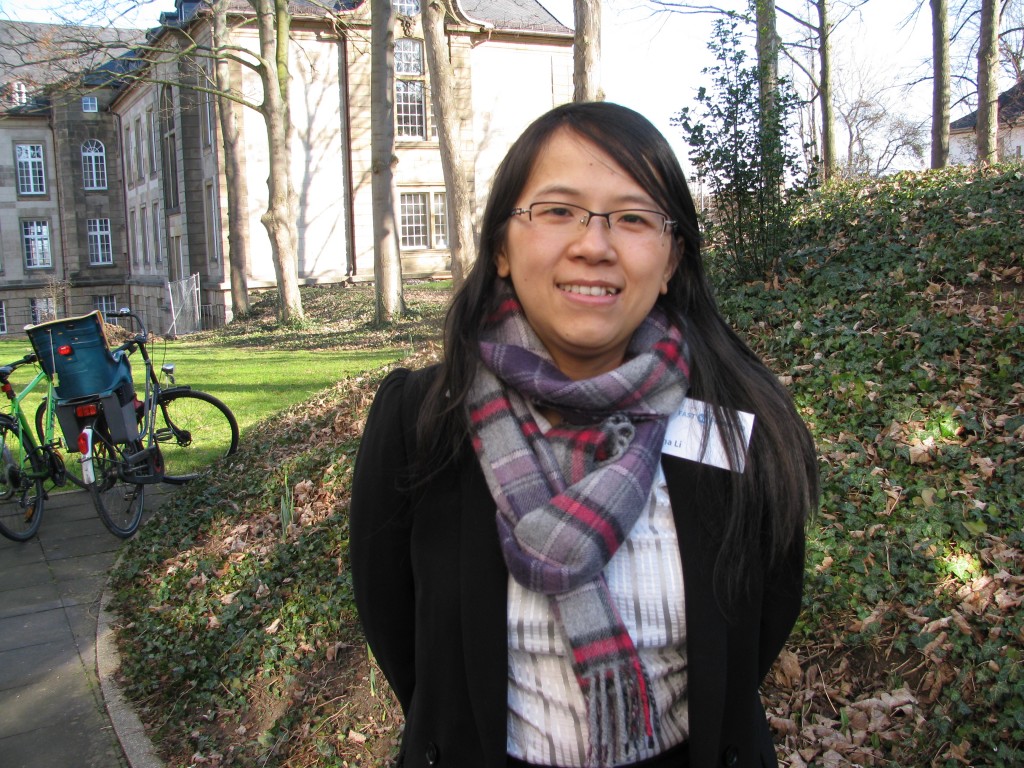
Lina Li from the Adelphi think-tank told me pollution concerns could speed up China’s climate action (Pic. I.Quaile)
The cost argument
Although many scientists are alarmed at the slow pace of emissions reductions, IPCC chief scientist Hoesung Lee told the Guardian in an interview it was still possible to keep to the two-degree target. The current UN climate chief Christina Figueres, who will hand over to Mexican Patricia Espinosa later this year, has said emissions would have to peak by 2020 if that limit is to be kept to. But Lee is keen to keep the options open, saying it would still be possible to keep to the limits if emissions peaked later. But he warned the costs could be “phenomenal”. He believes expensive and controversial geoengineering methods may be necessary to withdraw CO2 from the atmosphere and store it.
A report published this week by UNEP says the cost for assisting developing countries to adapt to climate change could reach up to 500 billion dollars annually by 2050. This is five times higher than previous estimates, the report says.
UNEP urged countries to channel more funds towards adaptation, saying the costs would rise “sharply”, even if countries succeed in limiting global temperature increase to two degrees Celsius.
I asked Mattias Söderberg, Co-Chair of the Climate change advisory group with the climate justice ACT alliance, how he felt about the progress of climate action and the role of the current Bonn meeting. He said the UNEP report, along with the alarming news about islands disappearing under rising seas in the Pacific, highlighted the urgent need for action. “Climate change is not a matter of tomorrow, but a crisis we need to deal with today.”
Time to ratify!
So far, 177 parties have signed the Agreement. But only 16 parties have ratified the treaty. It must be ratified by 55 parties representing 55 percent of total global emissions to enter into force. Söderberg called on wealthy, industrialized countries to move ahead with ratification:
“I am happy to see many of the poor and vulnerable countries moving fast with their ratification, and I hope other countries will follow soon. I am worried about the EU, which seems to be delayed”. Söderberg says the EU, could find itself on the sidelines, overtaken by others.
But the increasing concern over refugees and migration here in Europe could make a lot of countries look more closely at climate change, which is likely to increase the number of people having to leave their homes and look for a better life elsewhere.
“Go, world, go!”
NGO representatives stress that the Bonn talks can only help kick off the series of measures necessary to halt global climate change. Greenpeace climate policy chief Martin Kaiser told me the main work had to be done in the countries themselves, which have to work out their timetables to reach the goals agreed in Paris. That means an early transition to a fossil-free future. Kaiser called on host country Germany in particular, often cited as a model for its shift to renewable energy, to come up with a binding exit strategy for coal by 2030.
“Without an exit from coal, Germany’s signature under the Paris Agreement is worthless”, he told me.
The world’s top emitters, the USA and China, will also have to take major steps to halt climate warming. The delegates meeting in Bonn until May 26 have their work cut out for them. I have always been skeptical about the mass jubilation over the Paris Agreement. Yes, we needed it. But the proof of every pudding is in the eating. All the indications are that 2016 will be the hottest year on record, and probably by the largest margin ever. If the Paris document is to be more than a lot of pieces of paper, we will have to see things happening very soon – and definitely not just in the conference rooms of Bonn and elsewhere.
The Arctic on the UN agenda
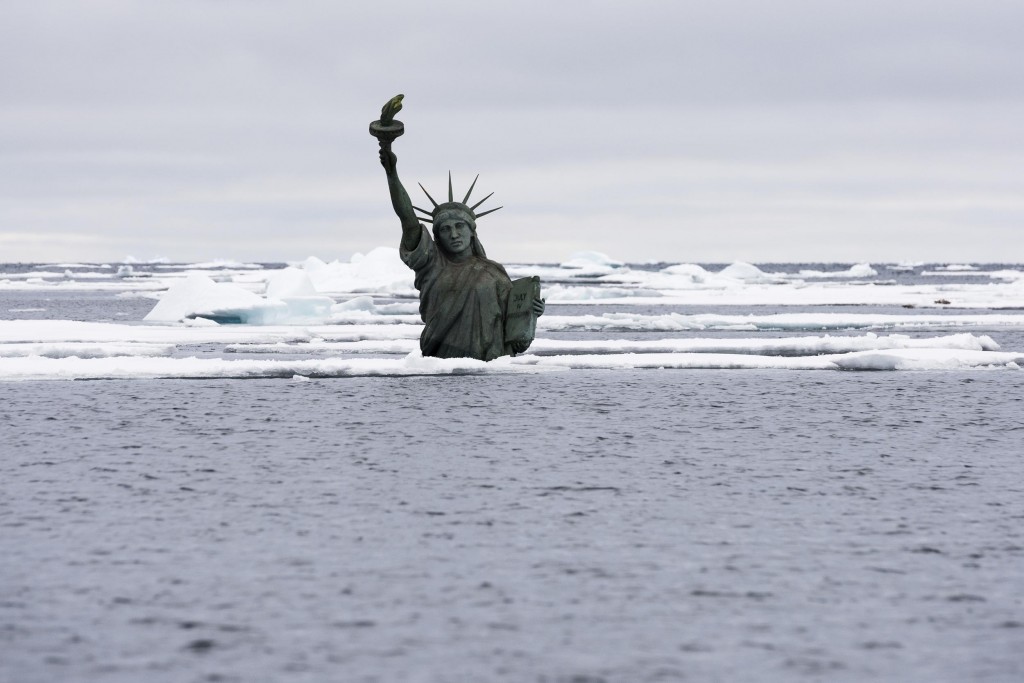
US icon sinking in melting ice? The photo was taken in the Arctic Ocean northwest of Svalbard the 7th of September 2014.
(Christian Auslund / Greenpeace)
To those of us who deal with the Arctic on a regular basis, the significance of the melting ice for the UN climate negotiations and vice versa is abundantly clear. But not everybody understands all the connections. A major media event like this week’s New York climate summit hosted by the UN Secretary General Ban Ki Moon in person was a fine chance to focus attention on the need to protect the Arctic. Greenpeace made good use of it, handing over a petition with six million signatures just ahead of the big event, and with hundreds of thousands gathered in New York for the Climate March.
It was timely in more ways than one, just as the latest sea ice figures were published to confirm the melting trend.
The petition calls for long-term protection of the Arctic, with the region warming more than twice as fast as the global average and opening the high north to shipping and commercial exploitation. Greenpeace and other groups are calling for a ban on oil exploration, which could endanger the fragile ecosystem. Experts also have safety concerns about increased shipping.
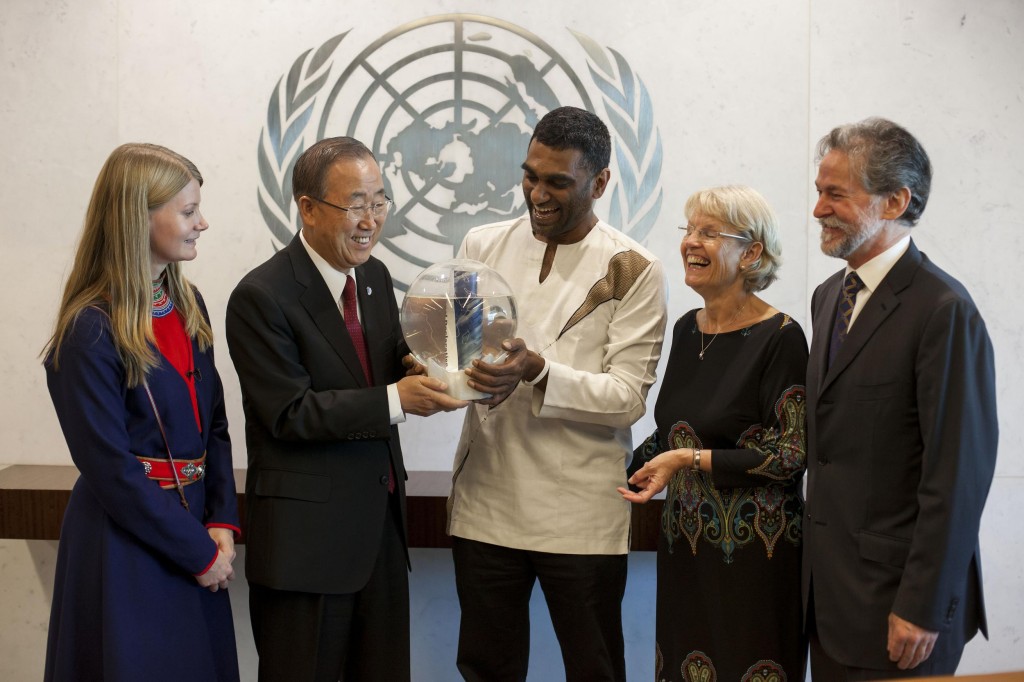
Ban Ki-moon receives the Greenpeace delegation with the petition. The delegation consists of Indigenous rights activist, youth leader and Saami politician Josefina Skerk, Margareta Malmgren-Koller, Greenpeace Senior Political Advisor Neil Hamilton and Greenpeace International Executive Director Kumi Naidoo. Photo: Michael Nagle / Greenpeace
Commercial development versus environment
Earlier this month, a survey showed that 74% of people in 30 countries support the creation of a protected Arctic Sanctuary in the international waters surrounding the North Pole. The study was commissioned by Greenpeace and carried out by Canadian company, RIWI. Around the same time, the Arctic Council, which combines the Arctic states and indigenous peoples’ representatives, currently chaired by Canada, supported the founding of a new business grouping, the Arctic Economic Council. Its aim is to promote the commercial development of the Arctic region. I wrote about this here on the Ice Blog and on the DW website.
Global responsibility for the Arctic
The UN Secretary General accepted the Greenpeace petition saying:
“I receive this as a common commitment toward our common future, protecting our environment, not only in the Arctic, but all over the world.”
Ban Ki-moon said he would consider convening an international summit to discuss the issue of Arctic protection. He also expressed a desire to travel aboard one of the organisation’s campaigning ships in the Arctic in the near future.
Greenpeace Executive Director Kumi Naidoo, who was part of the delegation, said: “The Arctic represents a defining test for those attending the summit in New York”.
He said leaders should bear in mind that concern for the rapid warming of the world was not consistent with planning oil and gas development in the melting Arctic.
The small delegation that met Ban Ki Moon included Indigenous rights activist and Saami politician Josefina Skerk, who last year trekked to the North Pole to declare the top of the world ‘the common heritage of everyone on earth’.
Skerk, a member of the Saami Parliament, said: “We, who want to continue living in the North, are gravely concerned about climate change and the destructive industries that are closing in. My people know and understand the Arctic, and it is changing in a manner, which threatens not just our survival, but the survival of people all over the world.”
Skerk said humans had created the crisis and had to take action to solve it.
“I urge the Arctic countries in particular to take a giant step up and I think the world needs to pay much closer attention to ensure that it happens. They might as well start here in New York.”
From Kiribati to Svalbard and New York
Melting ice especially from the Arctic Greenland ice sheet is raising sea levels around the globe, endangering low-lying areas. At the weekend, the President of Kiribati, Anote Tong, ended a Greenpeace-organized tour of glaciers in Norway’s Svalbard Archipelago. He said the trip to the Arctic ice had made a deep impression on him, which he would share with world leaders at the U.N. climate summit:
“It’s a very fascinating sight. In spite of that, what I feel very deeply is the sense of threat,” Tong said. “If all of that ice would disappear, it would end up eroding our shores.”
Kiribati is a group of 33 coral atolls located about halfway between Hawaii and Australia. Many of its atolls rise just a few feet above sea level.
In last year’s report by the Intergovernmental Panel on Climate Change (IPCC), experts concluded oceans could rise by as much as 1 meter (3.3 feet) by the end of this century if no action is taken to cut the greenhouse gas emissions causing global warming.
“It won’t take a lot of sea level rise to affect our islands,” Tong said. “We are already having problems.”
Sea ice minimum confirms melting trend
The New York summit coincides with the annual announcement of the minimum sea ice for the year, as the summer season comes to an end. The sea ice – in contrast to glaciers on land – does not influence global sea level, but is regarded as a key indicator of how climate change is affecting the region. This year the figure announced by the US National Snow and Ice Data Centre (NSIDC) was 5.01 million square kilometers. The figure is the sixth lowest extent since records began.
The minimum ever recorded at the North Pole was 3.29m sq km in 2012 – and the eight lowest years have been the last eight years.
Ice levels in the Arctic have recovered from their all-time low, but are still on a shrinking trend, said Julienne Stroeve of the National Snow and Ice Data Centre. ”We have been telling this story for a long time, and we are still telling it,” she said.
NSIDC records showed that, this year, ice momentarily dipped below 5million sq km to 4.98m on 16 September, but the official figure is taken from a five day average.
Satellite data shows that one part of the Laptev Sea was completely clear from sea ice for the first time this summer. One of the most important questions for climate scientists is how soon the Arctic will experience its first sea ice-free summer.
Rod Downie, head of WWF UK’s polar programme, said that this year’s new Arctic minimum should prompt new action from the leaders meeting in New York. He stressed the connection between the Arctic and weather conditions in other parts of the world:
“As David Cameron prepares to meet other global leaders at the UN climate change summit in New York, the increased frequency of extreme weather that is predicted for the UK as a result of a warming Arctic should serve as a reminder that we need urgent action now to tackle climate change,” he said.
The summit was a major PR event to draw attention to the need for urgent and substantial climate action. The accompanying protests around the globe show people are not happy with the slow pace of the climate talks and their governments’ efforts to reduce emissions. Of course there was little in the way of concrete pledges. Still, on the whole, I see it as a successful step on the way to a new climate agreement because it has put the spotlight on climate change at a time where international conflicts are dominating the news agenda.
More commentary on the summit from me here:
World leaders must act as climate takes centre stage
All-star gala puts climate back on the agenda
Can Cancun find the funding? UN group points the way
One of the few things that did come out of last year’s disastrous Copenhagen climate conference was a commitment by developed countries to mobilize 100 billion US$ annually by 2020 to help developing countries take measures to adapt to climate change impacts and implement new climate-friendly technologies. The proof of the pudding, as we know, always lies in the eating. And in this case the pudding still has to be mixed and set.
On Friday, a group called the AGF – a special Highl-level Advisory Group on Climate Change Finance set up by UN Secretary General Ban Ki-moon in February this year – submitted its analysis to the UN. It demonstrates the feasibility of getting this public funding organised.
The next question is whether Cancun can com up with an agreement that will actually get the funds moving.
EU Commissioner Hedagaard told me in Brussels this was one of her priorities.
WWF says the AGF “provides a useful starting point for moving forward.”
“Now we look to governments to come up with the political mechanisms to get the finance actually flowing”, says Gordon Shepherd, leader of WWF’s Global Climate Initiative.
Given that there is no hope of reaching a binding post-Kyoto climate agreement at the Cancun conference, we can only hope for a package of measures to come out of the meeting which will at least take us some way towards reaching one next time round – and making some practical progress in the meantime. The developed countries have to deliver on the funding commitment.
There’s some useful background on the financing issue and the AFT on the UNEP website and on
the WWF website
Climate, Migration and Security
I had an enjoyable short walk early this morning,as soon as it got light, across snow-covered fields – although it is thawing, and the light snowfall was turning into a fine drizzle. It was like a silvery-grey veil over the sky and the landscape and beautifully quiet, just me, one or two dog-walkers and a peckish-looking buzzard.
The bird reminded me of something a visitor from Africa said to me at the weekend. “The Germans even have perches for their birds-of-prey by the motorway”. It’s true – not just by the motorways.The bird was using a perch set up in an orchard.
The visitor, used to hot weather, was also delighted to see some snow, and amazed to feel how cars slither on icy roads. “Is it always like this at this time,is this the height of winter, how long does it last?”
Of course people here are saying it’s time spring came along, this has been an unusually cold and snowy winter… But of course this used to be much more “normal” not so many decades ago. And “extreme” weather events, are becoming more common.
The visitor was one of a group from different parts of Africa and other parts of the world in town for a conference on Migration and Security in sub-Saharan Africa.
More about Migration and Security on the website of the Bonn International Centre for Conversion
I was at the conference, which was looking at the extent of migration, the causes and what we need to do about it.
Climate change is, of course, already a factor, and that will increase tremendously in the years to come.
One of the presentations was by Dr. Koko Warner of UNU-EHS, that’s the United Nations University Institute for Environment and Human Security.
More about the work of UNU-EHS
There were a lot of interesting papers at the conference, but Dr. Warner’s, was on the role of environmental degradation in provoking migration.She stressed the need for climate change and environmental degradation to be tackled together, rather than in separate boxes. One thing that stuck in most people’s minds was what she said about possible numbers of migrants. Everybody wants to know how many people are likely to be affected. There are various estimates, but none is based on real scientific estimates at yet. There’s a huge variation in the estimates. A “conservative” estimate says that after 2050, 200 million people will be pushed by “environmental” factors to migrate. Other forecasts see up to 700 million people on the move.
It’s not hard to work out how that could become a challenge to global security.



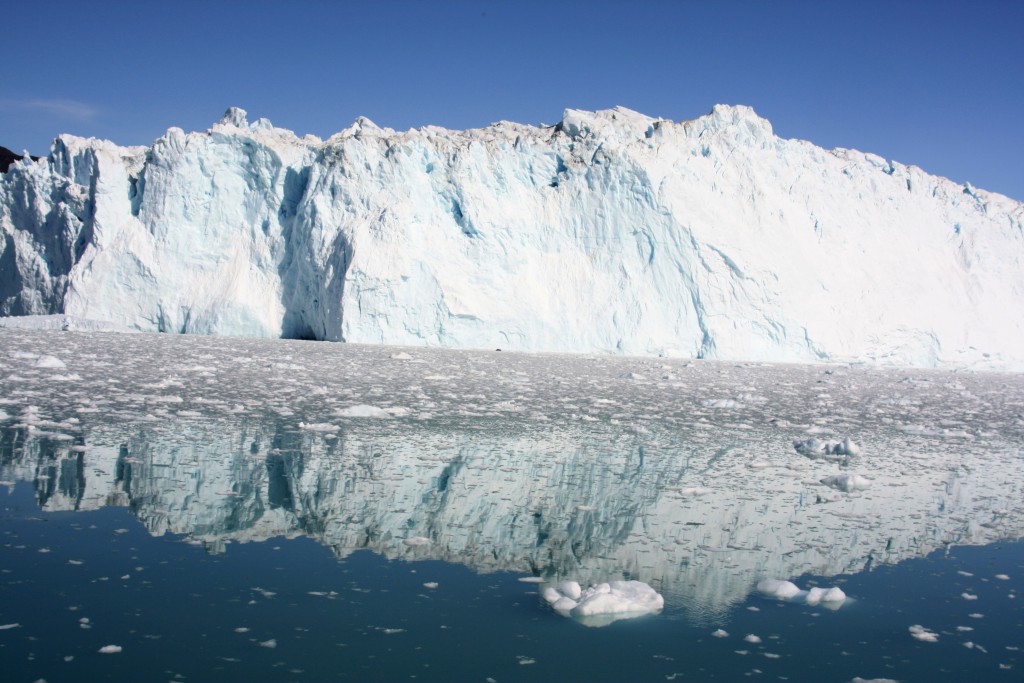
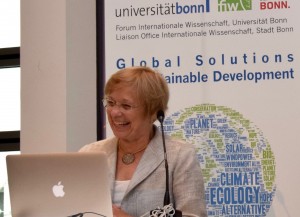

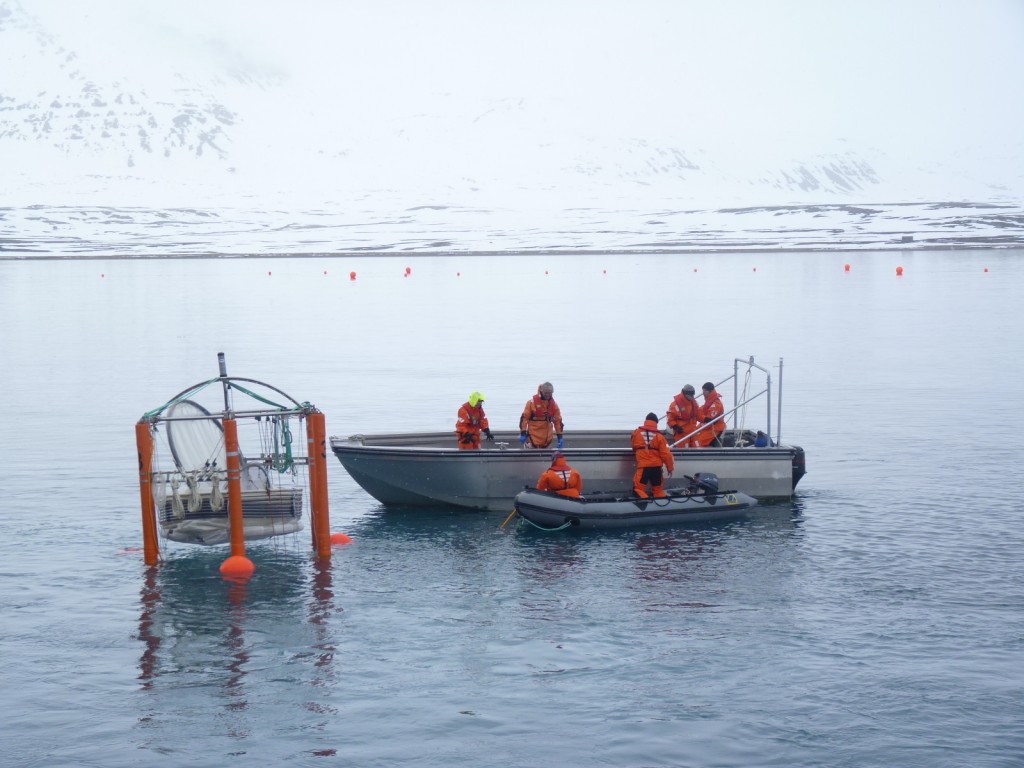

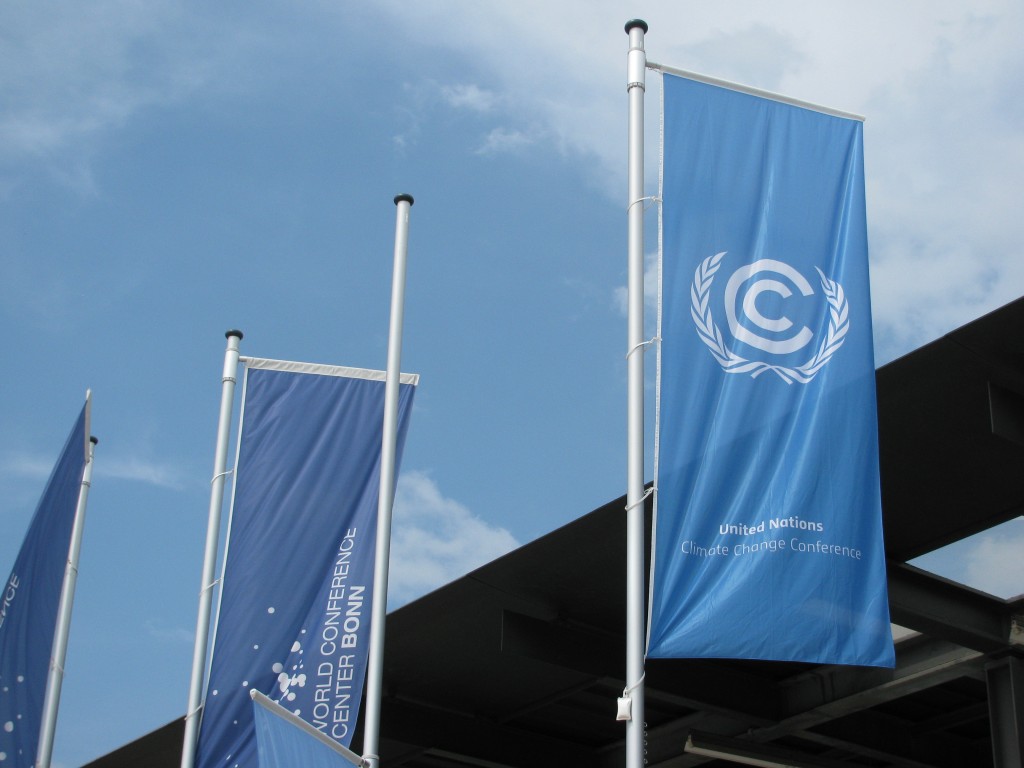
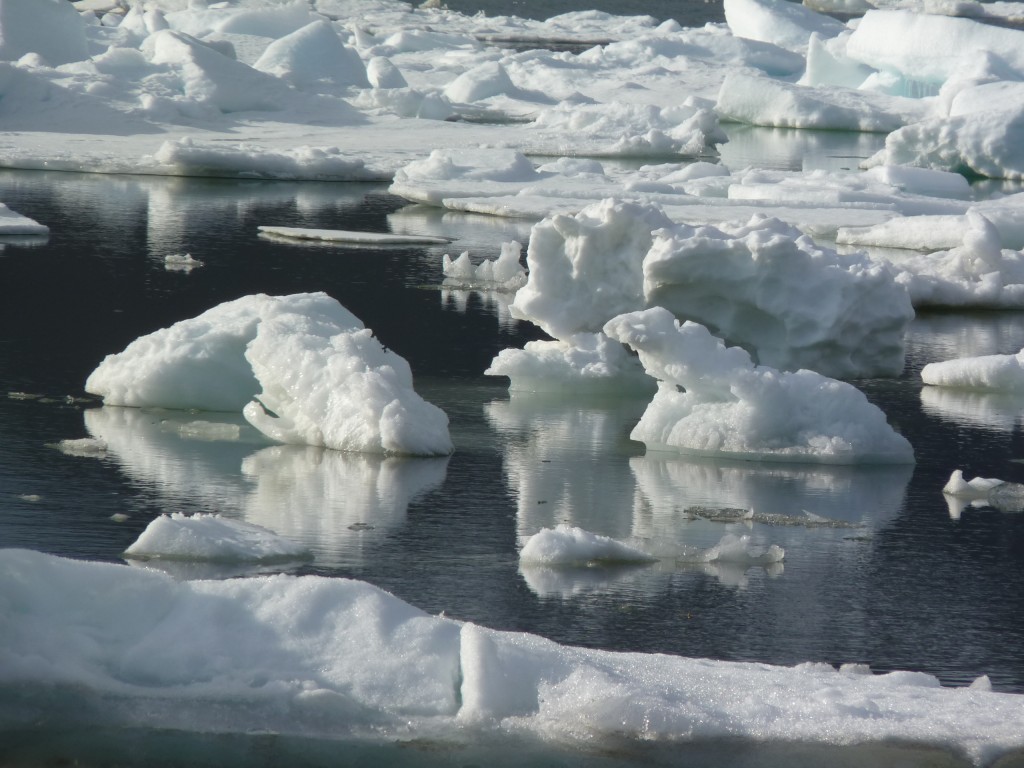


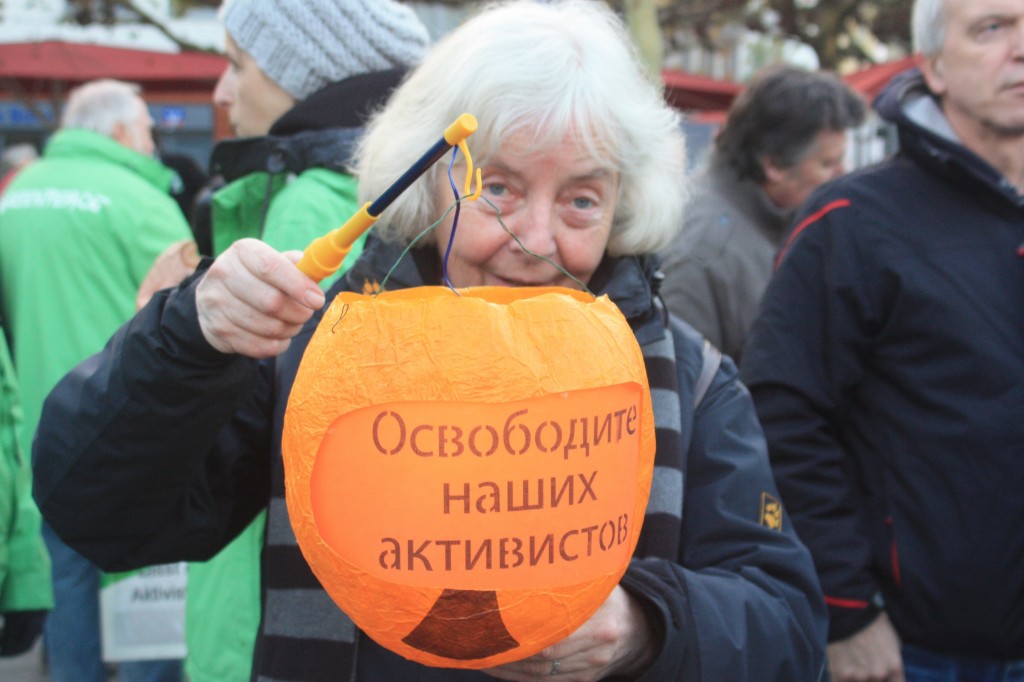
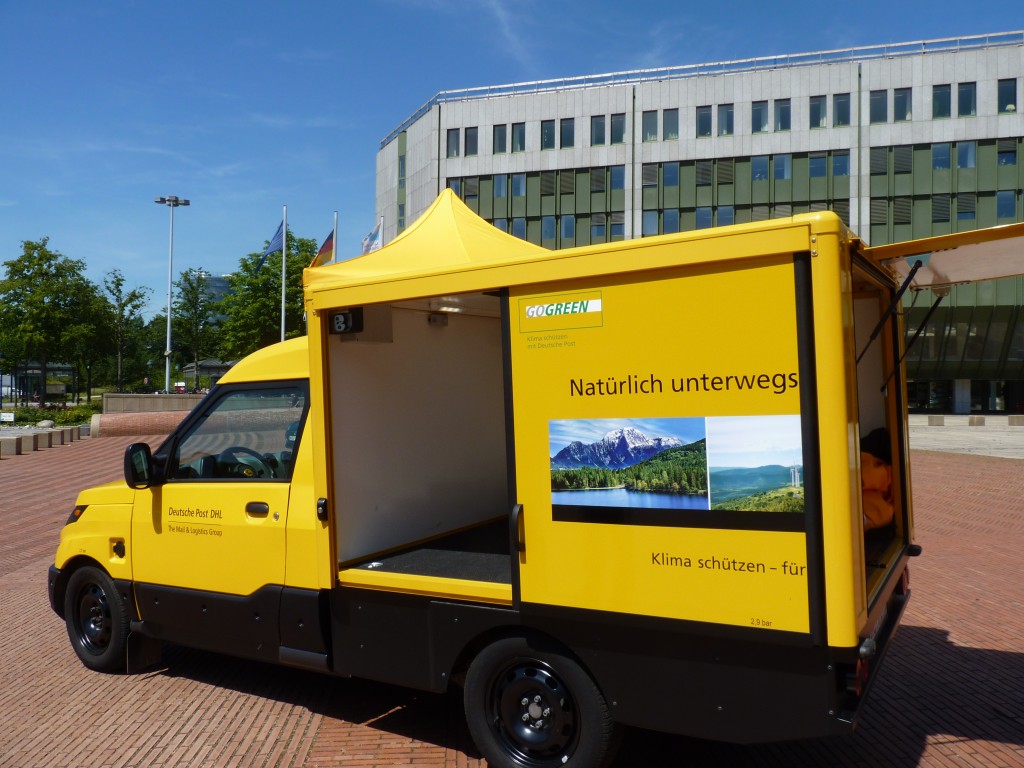













Feedback